Best Toddler Formulas (2024 Guide)
This post may contain affiliate links. As an Amazon Associate, I earn from qualifying purchases. Please read my disclosure.If your child is older than 12 months, you may be wondering whether or not you should continue giving them formula. In this post, I’ll answer all of your questions about whether or not you should continue formula and provide you with a list of the best toddler formulas on the market today!

When your child is an infant, they need breast milk or formula to grow and thrive. As they grow older, solids are introduced, but breast milk and formula continue to be the main source of nutrition.
However, after the age of 12 months, many parents wean their child from the breast or formula. But as your child grows, you may be wondering if you should continue with formula, or possibly even switch to a toddler formula.
In this post, I’ll answer all of your formula questions so that you can decide if continuing with formula or switching to a toddler formula or whole milk is a good idea for your child. This post will also help you find the best toddler formula – with detailed guidelines on what to look for and what to avoid!
A Disclaimer And Our Methodology
As a board certified health coach and certified nutritionist, I support products and ingredients that are rooted in science and are evidence-based. Using my background in nutrition, along with extensive research (see below for details), consultations with experts, and my own personal experience giving my two kids formula, I was able to arrive at this list of the best formula for toddlers in this guide. This post has also been medically reviewed and fact checked by Christina Badaracco, MPH, RDN, LDN (see my about page for more info about Christina).
My toddler formula recommendations are based on:
- Over 100 hours of extensive research
- Speaking with hundreds of parents on what has worked for their children (along with personal experience with my own two kids)
- Reviewing the manufacturer’s claims and ingredients list of all of the current different toddler formula brands
- Speaking with doctors, pediatricians, dieticians and other medical experts
- Reviewing countless articles and peer-reviewed studies
Though I may receive a commission (at no extra expense to you) if you purchase through some of the affiliate links provided, I only recommend products that I’ve researched, evaluated, consulted experts on, and would feel comfortable giving to my own two children. As always, I only share products that are the highest quality and that can help you and your family the most. By purchasing any of these products from the links below, you help keep this blog running, so thanks for your support!
Keep in mind that every baby and situation is different, so when it comes to choosing a toddler formula, please consult with your pediatrician first before starting on or switching to a different toddler formula. My recommendations are not a substitute for professional medical advice, diagnosis, or treatment.
Table Of Contents
- What Is Toddler Formula?
- When Is Toddler Formula Recommended By Your Doctor?
- Do Babies Need Formula After 12 Months?
- Toddler Formula Vs. Milk
- How Frequently Should I Give My Child Toddler Formula?
- What To Look For In Toddler Formula
- Ingredients To Avoid In Toddler Formula
- 13 Best Toddler Formulas: European & International Brands
- Best U.S. Toddler Formulas
- Best Goat Milk Toddler Formulas
- Fun Ways To Use Toddler Formula
- When Should I Stop Giving Formula To My Toddler?
- FAQs
- Final Thoughts
- More Helpful Articles About Baby And Toddler Formula!
What Is Toddler Formula?
Toddler formula is for young children between the ages of 9 months and 3 years. It’s meant as a transition between infant formula and whole milk. Since most babies are eating solids by 6–9 months, most toddler formula is created to be a supplemental nutrition source rather than a complete one, unlike infant formula.
Toddler milks or formulas are made with many of the same ingredients as infant formula. However, as I’ve explained when recommending the best organic baby formula, many ingredients in toddler formulas (such as added sugars, thickeners/stabilizers, and synthetic nutrients) are not beneficial for your child.
It is also important to note that not all toddler formulas are FDA-regulated for their nutritional content. This means that most of the varieties on the market have more sodium, fat, and sugar than infant formula. Furthermore, because the FDA does not set consistent nutritional guidelines for these products, many of the toddler formulas vary in their nutritional profiles (source).
However, not all toddler formulas are bad! There are actually high-quality, organic toddler formulas out there to choose from. Depending on your child’s needs and following the guidance of your child’s pediatrician, using a toddler formula may be a good choice – especially if you choose a high-quality formula that has additional vitamins, minerals, and other key nutrients.
When Is Toddler Formula Recommended By Your Doctor?
Your pediatrician may recommend toddler formula for any of the following reasons:
- A kidney condition (e.g. chronic kidney disease) that makes your child unable to digest cow’s milk
- Iron-deficiency anemia
- Developmental delays
- Malnourishment
- Growth concerns or other nutrition concerns
- Medical conditions
But remember, do not start toddler formula without the recommendation of your pediatrician.
Do Babies Need Formula After 12 Months?
According to the American Academy of Pediatrics (AAP) and the American Academy of Family Physicians, pediatricians recommend that healthy toddlers between the ages of 12–24 months should switch to whole dairy milk and consume 16–24 ounces a day (source).
Before the age of 12 months, giving your child dairy as a primary nutrition source is discouraged (source). This is because babies’ kidneys are not yet mature enough to handle the proteins and minerals in cow’s milk. Cow’s milk also doesn’t have the complete nutrition for infants to subsist on. For these reasons, the main food source during your baby’s first year should be breast milk or infant formula.
Therefore, it is not necessary to continue with infant formula after the age of 12 months. However, this number is not set in stone, and babies and families will vary a bit as to when they make the transition to whole milk. For example, if your child was born prematurely, your pediatrician is concerned about growth or weight, or your child is a super picky eater, continuing formula may be the right choice. Always consult your pediatrician for guidance on whether your little one should switch to toddler formula and when to do so.
After 12 months, your child should be getting a substantial portion of their nutrition from healthy baby superfoods such as avocados, blueberries, spinach, butternut squash, and other foods that can be introduced before 1 year of age (e.g., soft meats, fish, beans, yogurt, etc.) (Source 1, Source 2).
Note: introducing nuts (as well as peanuts) in the form of powder, puffs, or nut butter mixed into a puree before 12 months is also often recommended now to prevent development of allergies and provides beneficial nutrients (source).
From age 1 and beyond kids can eat more dairy, and continue to eat animal protein sources (if applicable to their diet), beans, whole grains, nuts and seeds, and a variety of other foods as well.
Related: Easy Homemade Baby Food Recipes
A note about breastfeeding after 12 months: if you are breastfeeding, you can continue doing so until you and your child are ready to wean. Your breast milk composition will naturally change as your nursing baby grows, adapting to their changing nutritional needs (source).
Toddler Formula Vs. Milk
The best organic toddler formulas have added vitamins, minerals, and other nutrients, above and beyond what whole milk provides. This is usually not necessary for most children who are getting an otherwise balanced diet since a lot of those vitamins can also come from solid foods as well as milk.
Whole milk is meant to provide your child with needed calories, fat, protein, and minerals—but won’t be as nutrient-packed as formula, which is fortified with additional nutrients for children who need it.
According to the AAP, there is no evidence that toddler formula is any better than regular, organic, whole milk (source). However, in some of the cases listed above where your child may not be getting a complete and healthy diet, some children’s toddler formulas could be a better option.
How Frequently Should I Give My Child Toddler Formula?
If you choose to give your child toddler formula, it is recommended that they consume somewhere between 12–24 ounces per day, depending on the brand and the feeding guidelines recommended to you by your doctor.
As your child grows past the age of 12 months, they will gradually shift to getting most of their nutrition from a balanced diet of vegetables, fruits, whole grains, and healthy protein sources. For this reason, the bulk of their nutrition should come from nutritious solid foods.
Related: Baby-Led Weaning Foods & Guide
What To Look For In Toddler Formula
- Organic: This ensures that you are buying a formula that is made without pesticides, GMOs, hormones, or artificial and synthetic ingredients. If you can’t go with an organic formula, I recommend choosing one that is at least non-GMO.
- Whey-to-Casein Ratio: A whey-to-casein ratio of 60:40 most closely resembles mature breast milk, making the formula easier for little ones to digest.
- Grass-Fed: Organic formulas use cow or goat milk, so look for ones that are grass-fed if possible. This type of milk is higher in omega-3 fats (source), making it a better source of natural DHA (source).
- No Added Sugars: Added sweeteners include ingredients such as corn syrup, maltodextrin, sugar, brown rice syrup, corn sugars, and syrup solids. Many of these sugars are processed and don’t add nutritional value to the formula. Instead, lactose, which is the naturally occurring sugar in milk, should be the only carbohydrate source used (the alternative carbohydrate sources would be added sugars as mentioned here).
- Prebiotics And Probiotics: Studies show that prebiotics and probiotics help to develop a healthy immune system (source), making them an important component to consider when shopping for toddler formulas. More formulas contain prebiotics than they do probiotics. If you choose a formula that lacks probiotics, I recommend supplementing your child’s diet with probiotic-rich foods such as yogurt and kefir.
- DHA and ARA: These are two fatty acids that facilitate healthy eye and brain development (source). DHA is an omega-3 and ARA is an omega-6. If possible, look for DHA and ARA that are extracted without using hexane. Hexane is a toxic substance and though the chemical doesn’t remain in the final oil product (source), cleaner extraction methods such as cold presses that don’t require any toxic chemicals can be a safer alternative and provide more peace of mind for parents.
- Essential Vitamins and Minerals: Vitamin D, B vitamins, vitamins C, E, and A; and minerals such as phosphorus, iron, and magnesium play a role in healthy development. All of the different formulas on this list contain these essential vitamins and minerals.
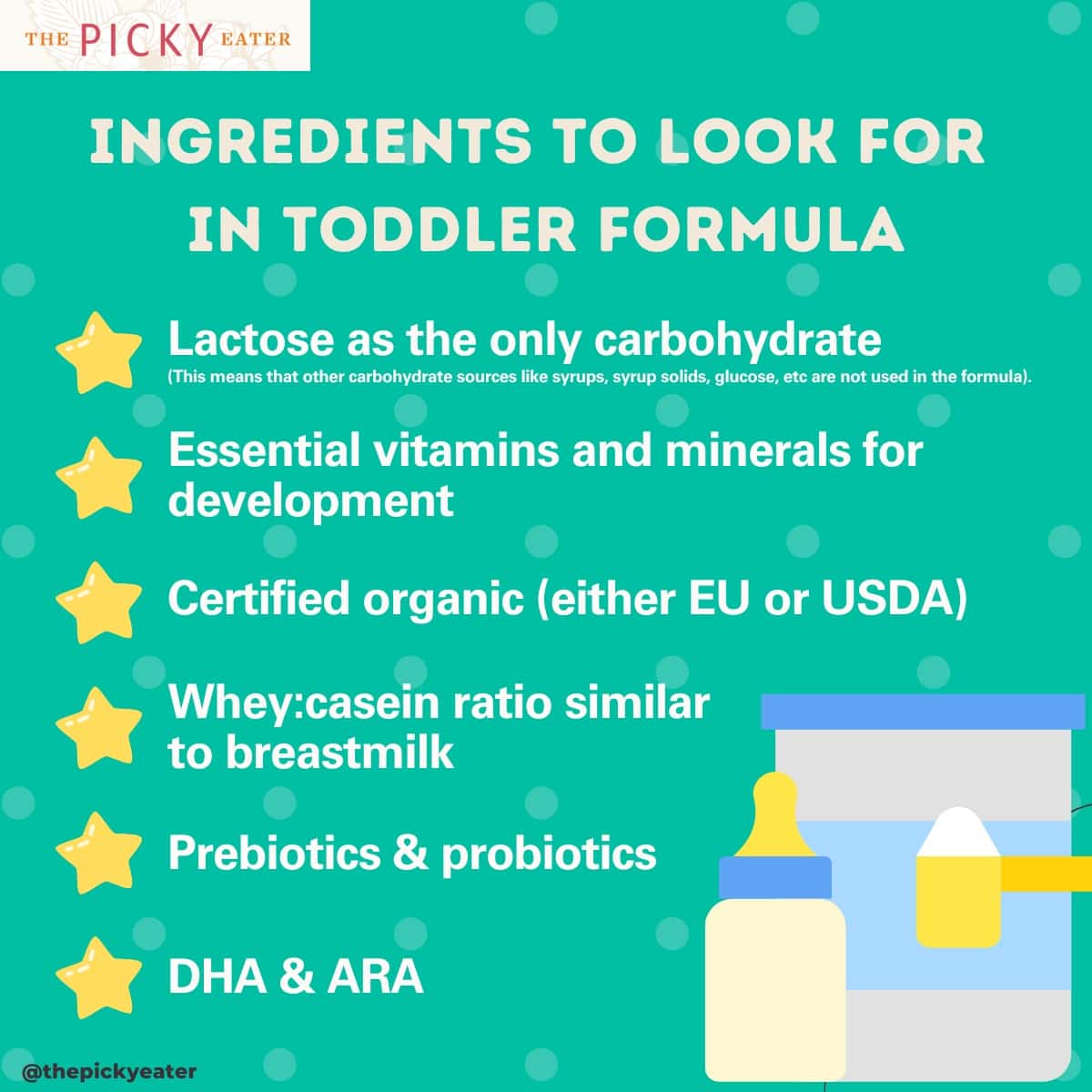
Ingredients To Avoid In Toddler Formula
- Added Sugar Or Syrup Solids: Some formulas use sugar, glucose, corn syrup, syrup solids (or other added sugars) as a carbohydrate source, but these are added sugars and can contribute to longer term health issues (Source). Syrups or syrup solids are less ideal than the better carbohydrate source – lactose – which is a natural sugar found in milk.
- Synthetic DHA and ARA: DHA and ARA are naturally found in breast milk. When added to a formula, they sometimes come from algae and fungus, respectively, and are often extracted using hexane. DHA and ARA that are extracted using a different process, such as cold pressing, are preferred. It may not be possible to tell based on package labels whether the DHA and ARA are synthetic or natural, so you can contact the formula company to verify.
- Heavy Metals: Some formulas have been found to have high levels of heavy metals, but you won’t be able to find this information just by looking at the ingredients list. Instead, you’ll have to do a little digging to see if your formula has been tested for heavy metals or not. I recommend looking at the Clean Label Project’s database and the EWG database to find this information (source 1, source 2, source 3).
- GMOs: Look for formulas that are certified non-GMO. If you buy an organic formula, it is automatically non-GMO. GMOs are concerning because some of these genetically engineered crops are designed to be resistant to the carcinogenic herbicide Round-Up. (Source).
- Carrageenan: This ingredient has been banned in Europe but is still used as a thickening agent in some formulas in the US. Carrageenan is known to cause inflammation in the intestines (source) and is therefore a good ingredient to avoid.
- Soy or Soy-Based Products: Too much soy given to infants may lead to health complications in the future, making it a good ingredient to avoid if possible (source).
- Palm Oil: This ingredient is not environmentally friendly and can cause digestive issues and calcium absorption issues in some babies (source). Palm oil is a common ingredient in US formulas, but it isn’t commonly found in European formulas. Note: If you are purchasing a US-manufactured formula and have to choose between palm oil and soy oil, I would recommend going with palm oil, because soy can be even more problematic in children.
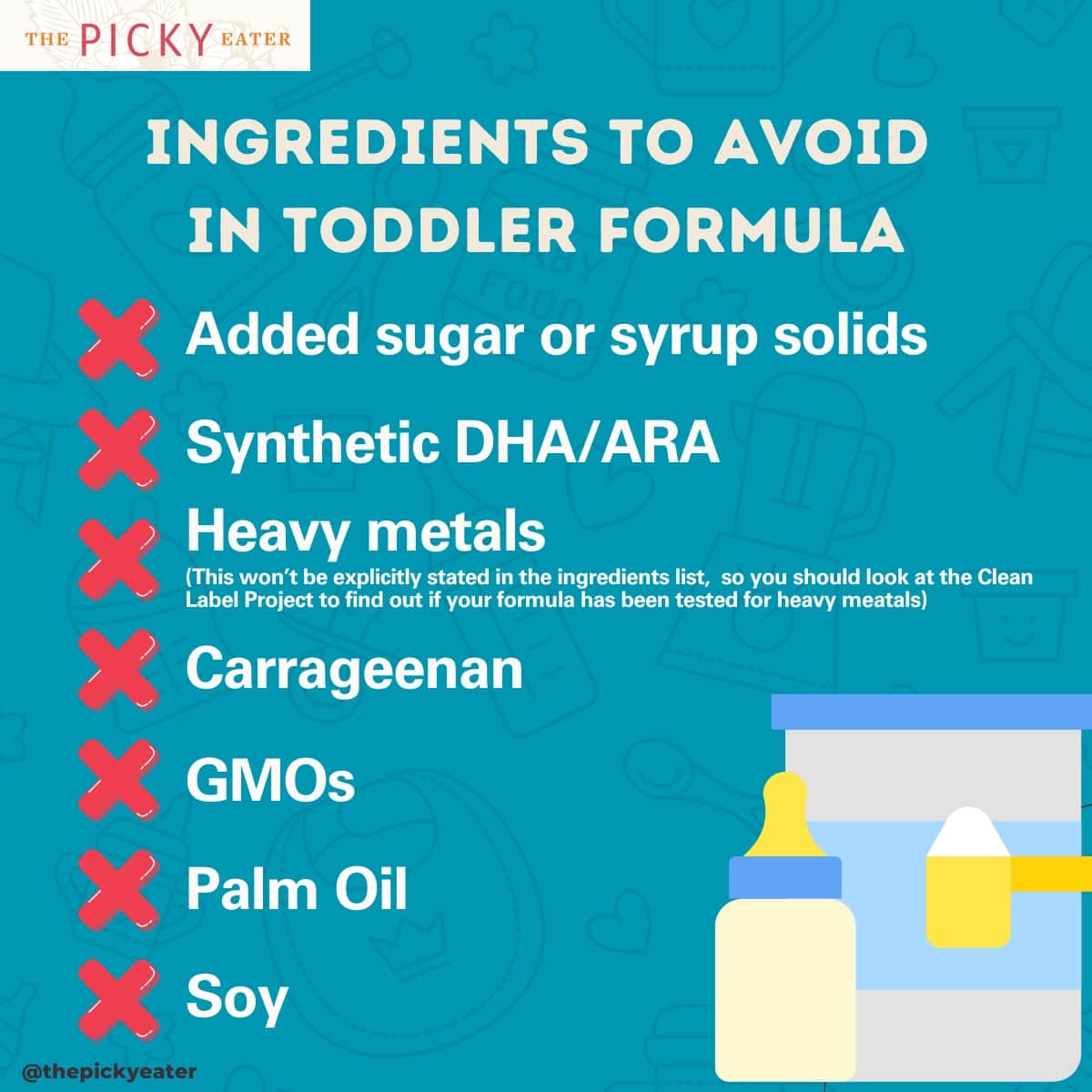
13 Best Toddler Formulas: European & International Brands
International and European formulas tend to be the best bet for clean and organic formulas because they are made according to the strict European Union regulations, though there are more and more quality American formula brands entering the market. For this reason, I am splitting the toddler formula review into the top European and International and the top United States toddler formula offerings currently available.
Without further ado, my top recommendations for international formulas:
Hipp Dutch Stage 3
Why I love it: This is my #1 pick for the best toddler milk. It is made with organic and non-GMO ingredients and is free from preservatives, steroids, pesticides, hormones, and other chemicals. It also has added probiotics and prebiotics; DHA; iron; vitamins A, C, & D; B vitamins such as folic acid and vitamin B12, and more.
Since this formula is suitable for 12 months and older, it is lower in lactose content than HiPP’s infant formulas, but is still made without any added sugar, syrups, or maltodextrin. This formula is on the more expensive side, but has great flavor and is easy to mix. It is also only available for purchase through European formula subscription services (such as MilkyBox). (Learn More: HiPP vs. Holle Formula).
Price: Costs $48.99 for 800g (28.22oz) of formula.
Pros
Cons
Kendamil Organic Stage 3
Why I love it: Kendamil is one of my preferred European formula brands. This British formula company is family-owned and is based in Kendal’s Lake District. Kendamil is made with whole milk from British farmers, meaning that it is lower in added vegetable oils. Because of this, the formula is proudly soy-free and contains no palm oil. It follows European Union standards, which are higher than US standards, making it free of corn syrup and added sugar.
Kendamil’s organic toddler formula is made with plant-based DHA, making it vegetarian-friendly while supporting muscle, eye, and brain development. It is high in minerals such as iron and vitamins A, C, E, and D. The only reason it’s ranked slightly lower than HiPP Dutch Stage 3 is its higher price tag.
Previous to the United States formula shortage, Kendamil was only available through European subscription services. Their toddler formula is now available for purchase at Target, but is not organic.
Price: $55.99 for a single 800g (28.22oz) can of formula. Buy in bulk for as low as $49.99 per 800g can.
Pros
Cons
HiPP Germany Stage 3
Why I love it: This toddler formula is another fantastic option from HiPP, one of my favorite European formula brands. This formula is made in Germany with high-quality organic milk from grass-fed cows. It is made according to European organic formula standards, making it free of synthetic preservatives, GMOs, and more.
HiPP Germany Stage 3 contains prebiotics, probiotics, DHA and ALA, and it contains 40 times more iron than cow’s milk to help your toddler meet their daily requirement of this essential nutrient. This toddler milk also contains lactic acid that was originally obtained from breast milk to support your little one’s gut health development. It is suitable from the 10th month onwards, and contains vitamins A, C, and D.
Price: Costs $37.99 for 600 grams of formula (equivalent to $50.65 for 800 grams of formula). Buy in bulk for as low as $26.40/box.
Pros
Cons
Aussie Bubs Grass Fed Nutritional Milk-Based Toddler Formula
Why I love it: Bubs is a newer addition to the formula market but produces one of the best organic milk formulas for toddlers. This company was founded in 2005 in Australia and is based upon high-quality principles. This whole cow’s milk formula is made with organic milk from cows who grass feed in open pastures for 365 days of the year.
Containing prebiotics, probiotics, DHA, ARA, and essential vitamins, this formula is a great addition to your child’s diet if a pediatrician recommends a toddler formula for your little one. This powdered formula is meant for babies aged 12–36 months and received the Clean Label Project Purity Award, making it free of unhealthy ingredients, pesticides, pathogens, and more.
Cost: $28.99 for a 800g can of formula.
Pros
Cons
HiPP UK Stage 3
Why I love it:HiPP UK is another one of the best formulas for one-year-olds. It is very similar to the HiPP Dutch Stage 3, with a few exceptions. It is made according to EU standards and is organic, non-GMO, and free of starch, maltodextrin, sugar, and more. Like HiPP Dutch, it is made with organic skimmed milk, lactose, vegetable oils, vitamins, and also contains prebiotics and DHA. Additionally, since this toddler formula contains docosahexaenoic acid (DHA) from fish oil (as does HiPP Dutch), it is not a vegetarian-friendly formula.
The main difference between HiPP UK Stage 3 and HiPP Dutch Stage 3 is that the UK version does not contain added probiotics. It is also about 6 dollars less per container of formula.
Price: Costs $42.99 for 600 grams of formula (equivalent of $57.32 for 800 grams of formula). Buy in bulk for as low as $36.99/box.
Pros
Cons
HiPP Stage 4 (HiPP Kindermilch)
Why I love it: HiPP Stage 4 is a fantastic organic follow-on formula for picky eaters or for little ones who don’t otherwise consume all of the nutrients necessary in a toddler’s diet. This formula contains the nutrition content needed for healthy growth: skimmed milk, lactose, iron, vitamins D and A, B vitamins, probiotics, and more. This milk powder for toddlers also contains lactic acid cultures derived from real breast milk, which encourage gentler digestion for your toddler as their digestive flora change from eating solid foods.
This is an ideal formula to use if you plan to supplement with formula well into the toddler years as it is made specifically for drinking from a cup vs. a bottle.
Price: Costs $40.99 for 600 grams of formula (equivalent to $54.65 for 800 grams of formula). Buy in bulk for as low as $33.99/box. For families who intend to formula feed beyond the age of 2, there is also a Follow On Stage of Kindermilch for kids aged 2+.
Pros
Cons
Holle A2 Milk Stage 3
Why I love it:This toddler powder milk is made from high quality organic A2 milk, or milk that is comprised of the A2 milk protein that can be easier to digest than the more commonly found A1 milk protein (source 1, source 2). It’s almost impossible to find organic A2 milk at the grocery store—so if your toddler needs A2 milk, this could be one of the best options for them. This toddler milk is great for children aged 10 months and older.
Otherwise, this milk is made with organic ingredients and is biodynamic and Demeter certified. Demeter is the largest international certification organization for biodynamic agriculture (source), helping to make this one of the safest toddler formulas on the market today. In addition to this, this growing-up milk contains DHA and ALA for healthy eye and cognitive development, essential vitamins, iron, and more.
Price: It is $31.99 for a 400g box of formula (or $63.98 for 800g). Buy in bulk for as low as $25.99/box.
Pros
Cons
Lebenswert Stage 3
Why I love it: This toddler formula is another great option from one of my favorite European formula brands, Lebenswert. Made in Germany using organic cow’s milk, this easy-to-digest formula is great for babies 10 months of age and older.
Though this formula does have sufficient essential vitamins, minerals, macronutrients, and DHA for your baby’s development, it doesn’t contain probiotics or prebiotics and also has added maltodextrin, an often processed starch used for thickening. The formula is free of artificial ingredients, chemical additives, gluten, preservatives, soy, and GMO ingredients, however.
Price: Costs $27.99 for 475 grams of formula (equivalent to $48.82 for 800 grams of formula). Buy in bulk for as low as $19.26/box.
Pros
Cons
Holle Bio Stage 3
Why I love it:There’s not many reasons not to love Holle Bio Stage 3! One look at the product label and you will see that this is a great formula for one-year-olds because it provides the vitamins, minerals, and other nutrients for your baby’s overall health. Furthermore, this formula is organic and Demeter certified, meaning that it is produced with only the highest quality ingredients.
One of the pros of Holle Bio is that it is one of the most affordable European formula brands on the market. Buy in bulk and you will save even more money while feeling good about what you are feeding to your child!
Price: Costs $34.99 for 600 grams of formula (equivalent to $46.65 for 800 grams of formula). Buy in bulk for as low as $28.99/box.
Pros
Cons
Holle Bio Stage 4
Why I love it: Holle Bio Stage 4 is the final stage of the Holle Bio line. It is meant for children aged 12 to 24 months and is formulated to complement a weaning or solid diet and can be used as a whole milk substitution. It may be fed in a bottle or incorporated into cereal. This formula is on my list of top picks because it is high in protein, iron, calcium, and other essential vitamins and minerals while being organic, Demeter certified, easy to digest, and made with no added sugar.
Like Holle Bio’s other offerings, this toddler milk is one of the most affordable European formulas while not compromising on quality, nutrition, or flavor.
Cost: $34.99 for 600 grams of formula (equivalent to $46.65 for 800 grams of formula). Buy in bulk for as low as $28.99/box.
Pros
Cons
Bébé M Organic Vegan Stage 3
Why I Love it: If you are looking for a toddler formula that is made with plant-based milk, Bébé M is a great option. Made for children aged 10 months to 3 years, this vegan formula is made without milk, gluten, and palm oil. Unlike many soy-based formulas, this formula is made with hydrolyzed rice.
In addition to being 100% vegan, this formula contains probiotics and plant-based DHA. It also is made with vitamin D that is extracted from plants, not fish. Unfortunately, it does contain maltodextrin for texture and is somewhat expensive. But, it is overall one of the best vegan toddler formulas on the market today.
Cost: $64.99 for an 800g can. Buy in bulk for as low as $58.99/can.
Pros
Cons
Premibio Organic Vegan Stage 3
Why I love it:This formula is a top pick for toddlers with lactose intolerance or who cannot tolerate cow’s milk for any other reason. Made with hydrolyzed rice protein instead of soy-milk, DHA derived from algae, and plant-derived vitamin D2, this is the only truly vegan-friendly toddler formula on my list. (Bébé M’s formula is made with vitamin D3, which is derived from animal sources.)
Though this formula is on the more expensive side, it certainly is a case of getting what you pay for. This vegan toddler milk is organic, non-GMO, and certified to European standards. It doesn’t contain palm oil, is soy-free, and is made for babies aged 12 months and older.
Cost: $48.99 for a 600g box (equivalent to $65.32 for 800 grams of formula). Buy in bulk for as low as $42.99/box.
Pros
Cons
PediaGrow Milk Based Toddler Powder
Why I love it:This French brand is another one of the best milk-based formulas. It is made in Normandy, an area that is known for some of the highest quality grass-fed dairy products that are rich in vitamins, minerals, and healthy fatty acids.
Though this toddler formula is made primarily with non-fat milk, it also contains milk fat, lowering the amount of added vegetable oils. Furthermore, it has added prebiotics and nucleotides, fish oil-derived DHA, vitamins and minerals including pantothenic acid (B5), B12, and more, as well as inositol for healthy insulin regulation.
Cost: $34.99 for a 400g can (equivalent to $46.65 for 800g of formula). Sign up for the monthly subscription for $31.49/can.
Pros
Cons
Best U.S. Toddler Formulas
Looking for a toddler formula that’s made in the United States? Below are my top recommendations.
Serenity Kids A2 Toddler Formula
Why I love it: Serenity Kids is one of the best toddler drinks made in the US today! It’s organic, non-GMO, and made with easy to digest A2 whole cow’s milk. Packed with vitamins, minerals, healthy fats, and prebiotics, this toddler formula is specifically formulated to meet the nutritional needs of kids over 12 months of age.
The DHA in this formula is derived from algae without using hexane, making it a hexane-free vegetarian-friendly formula. There is no gluten, soy, pesticides, or preservatives in it either. Though the formula does contain palm oil, it is sustainably sourced.
Cost: $32.95 for a 360g (12.7oz can; equivalent to $73.22 for 800 grams of formula). Buy in bulk for as low as $26.66/can.
Pros
Cons
Baby’s Only Organic Toddler Formula
Why I love it:Baby’s Only with whey is a certified organic and non-GMO brand that is made from American dairy. It is made with organic skimmed cow’s milk and organic whey protein and has a light vanilla flavor that many toddlers love. Made in Ohio, this is one of the best toddler milk powders because it has no added sugars, is free of synthetic ingredients, and has received the Clean Label Project Purity Award. The DHA in this formula is derived from eggs and naturally extracted without hexane, as well.
Unfortunately, this formula lacks prebiotics and probiotics. Lastly, this is marketed as a toddler formula but is similar to Kabrita (see below), so it meets the nutritional requirements for an infant formula.
Cost: $15.99 for a 360g can (12.7oz; equivalent to $44.44 for 800 grams of formula). Buy in bulk for as low as $13.59/can.
Pros
Cons
Else Nutrition Toddler Formula
Why I love it: This vegan and plant-based complete nutrition formula for toddlers is jam-packed with protein, vitamins, and other key minerals to help ensure healthy development. It is made with an almond base, making it soy-free and also safe for toddlers with a milk protein allergy.
This is one of my top picks for a dairy-free toddler formula, because it’s organic, is made with the highest level of quality, and along with Premibio, is one of only two 100% vegan formulas available (even the Vitamin D is vegan!). This version does not contain DHA or ARA, but Else just released a new version of their formula that has added omega fatty acids, as well!
Cost: $34.99 for a 624g can (equivalent to $44.86 for 800g of formula). Buy in bulk for as low as $29.50/can.
Pros
Cons
Earth’s Best Toddler Formula
Why I love it: Earth’s Best Toddler formula is a decent choice for a toddler formula. It is made in New York state with organic and non-GMO ingredients. The milk is partially grass-fed (the other portion is corn-fed) enhanced with prebiotics, DHA, and vitamins and minerals, making it a nutritious alternative to cow’s milk for toddlers. It has natural vanilla and is one of the more affordable options out there!
I rated Earth’s Best #4 on the list because it contains maltodextrin (a highly processed starch) along with cane sugar, palm oil, and soy oil. It also doesn’t contain any added probiotics, though it is a more affordable and easy-to-find option here in the States.
Cost: Costs $27.98 for a 595g can (equivalent to $37.62 for 800g of formula).
Pros
Cons
Parent’s Choice Toddler Next Stage GMO Free
Why I love it: Though this toddler formula is only non-GMO and not organic, it is on my list of top US-manufactured formulas because it contains DHA, iron, prebiotics, and essential vitamins and minerals while being easy to find at Walmart stores and very affordable. This formula is also SNAP-eligible.
Though the first ingredient is non-fat milk, this product does contain corn syrup solids, palm oil, and soy oil, unfortunately. It doesn’t contain maltodextrin or added starches, however.
Cost: $11.98 for a 680g can of formula (equivalent to $14.09 for 800g of formula).
Pros
Cons
Similac Organic Toddler Drink with A2 Milk
Why I love it: This toddler formula is a solid option for parents who are looking for A2 milk formula at a more affordable price point. This option is ⅓ of the price of Serenity Kids, while being organic, non-GMO, and containing DHA for eye and brain development.
Additionally, this formula powder is made with organic lactose and organic non-fat milk and does not contain any added maltodextrin, palm oil, starches, or sugar. It is at the bottom of my list because it contains soy, does not contain probiotics or prebiotics, and the DHA is extracted with hexane.
Cost: $19.98 for a 658g can of formula (equivalent to $24.29 for 800g of formula).
Pros
Cons
Best Goat Milk Toddler Formulas
Goat milk formula is a good option for many toddlers and infants. If you have a child who doesn’t tolerate cow’s milk, opting for goat milk-based formula may be better! For more about the pros and cons of goat milk vs. cow’s milk and the pros and cons of each, check out my post Is Goat Milk Formula Healthier than Cow’s Milk Formula?
For now, let’s review the best toddler formulas that use goat’s milk.
Kendamil Goat Stage 3
Why I love it: Kendamil provides the best goat milk formula. Their powdered formula provides essential nutrients without additives. Furthermore, goat milk contains A2 milk proteins, which can be a good option for toddlers who have a sensitivity to cow’s milk or common A1 milk proteins.
This formula also contains human milk oligosaccharides (HMOs)—the third largest solid component in human breast milk shown to scientifically strengthen older infants’ immune systems (source)—while being free of added sugar or corn syrup, palm oil-free, soy-free, starch-free, and vegetarian-friendly. The only two major drawbacks are that it doesn’t contain probiotics and is on the more expensive side.
Cost: $65.99 for 800 grams of formula. Buy in bulk for $59.99/can.
Pros
Cons
Kabrita Goat Milk Toddler Formula
Why I love it: Kabrita is a great goat milk-based toddler formula that is made in the United States. Though this option is not organic, all of the ingredients are non-GMO. The formula has a whey-to-casein ratio that closely resembles that in human breast milk along with added prebiotics, making it one you can feel good about feeding to your little one.
This option is meant for toddlers aged 12–24 months and contains no glucose syrup solids, no maltodextrin or added starch, and no palm oil. It is manufactured in the Netherlands and is non-GMO according to EU standards. In fact, it is the only formula in the US that is certified glyphosate residue-free. Kabrita also has a formulation for kids called Kabrita Junior, which can be a great option for kids older than 2 years of age!
Cost: Costs $40.99 for 800 grams of formula. Subscribe and save for $36.89/ can.
Pros
Cons
Holle Goat Stage 3
Why I love it:One of the best European formula brands, Holle, makes its appearance on this list for the third time with their Goat Stage 3 formula. This is the only goat milk formula on the list that is 100% organic. In fact, it is not only certified organic, but it is also biodynamic and Demeter certified, making it one of the cleanest toddler formulas around.
If choosing Holle for your little one, you don’t have to worry about added sugar or corn syrup solids, palm oil, or soy. It is fortified with plant-based DHA, though unfortunately it does contain maltodextrin and added starch while lacking probiotics, prebiotics, and ARA.
Cost: Costs $33.99 for 400 grams of formula (equivalent to $67.98 for 800 grams of formula). Buy in bulk for as low as $27.99/box.
Pros
Cons
Nannycare Stage 3
Why I love it: Nannycare Growing Up Milk is a non-GMO goat’s milk based formula suitable for babies and toddlers. It is made with A2 full cream goat milk from New Zealand goats, making it gentle on digestion and giving it a smooth and creamy texture that toddlers love. This formula is designed to be nutritionally complete for your child and contains amino acids, antioxidants, DHA, and more.
Though this formula is not technically organic, it is EU-certified to be in compliance with their strict standards for employing good farming principles and not using pesticides. This formula does not contain coconut oil, maltodextrin, added starch, sugar, or gluten. Unfortunately, it also lacks ARA, probiotics, and is not fully organic.
Cost: $72.99 for 900 grams (equivalent to $64.88 for 800 grams of formula).
Pros
Cons
Aussie Bubs Goat Milk-Based Toddler Formula
Why I love it: As I mentioned above, Aussie Bubs is a new favorite formula brand for a reason. It’s high quality while still being affordable and can be found easily in the United States at Target and on Amazon. Though this Australian-manufactured goat milk formula is not certified organic, it is non-GMO and is rigorously tested for pathogens and disease control. It is also a Clean Label Project Purity Award winner.
There are many other reasons to love this product: it contains both DHA and ARA as well as probiotics and is made without maltodextrin, added starch, or sugar. The only real drawbacks are that it is not organic and doesn’t contain probiotics; so, if you choose this formula for your child, you will want to consider adding probiotic-rich solid foods to their diet.
Cost: $39.98 for a 800g can of formula.
Pros
Cons
Fun Ways To Use Toddler Formula
You can use toddler formula as a mealtime beverage, as a replacement for bedtime or naptime milk, or instead of breast milk feedings. But there also many other creative ways you can work it into your toddler’s diet to enhance their nutrition and make it fun for them to drink. Here are some of my favorite fun ways to use it:
- Oatmeal: Simmer old fashioned oatmeal in formula instead of milk or water for an extra creamy and delicious warm breakfast your child will love. Top with berries, cinnamon, and bananas.
- Smoothies: Blend ¼ of a banana with ½ cup of toddler formula and ¼ cup of your toddler’s favorite frozen fruit for a delicious and refreshing smoothie you can feel good about feeding to your little one!
- Mac and Cheese: Enhance the flavor and creaminess of your favorite healthy mac and cheese recipe or add a nutritional boost to box mac and cheese by swapping toddler formula for the butter and milk.
- Popsicles: Substitute toddler formula for milk in banana popsicles or another healthy popsicle recipe.
When Should I Stop Giving Formula To My Toddler?
As always, when it comes to formula and questions about your baby’s nutrition, it is always best to follow the advice of your pediatrician. Most children will not need additional formula past their second birthday as they should be getting the majority of their nutrition from solid foods. If your child is a picky eater, has developmental delays, or has other medical concerns, your doctor may recommend that you continue with toddler formula for some time.
FAQs
No, the Food and Drug Administration does not currently regulate toddler formula, as it only regulates infant formula (source). Because of this, different toddler formula brands can have varying levels of nutrition, unlike infant formula that is required to have certain nutritional profiles, and possibly harmful additives/residues. If you are shopping for a toddler formula for your child, always do your due diligence and look into the ingredients, sourcing, and product testing to make sure that it is a good option for your child.
No, toddler formula is not the same as infant or baby formula. Baby formula is created to be a complete source of protein for babies under the age of 12 months, whereas toddler formula can be either a supplemental source of nutrition or a complete source of nutrition for babies 10–12 months or older. The exact targeted age of the toddler formula will vary depending on the brand, so always read the product labeling of the formula you are considering for feeding guides.
Whether the toddler formula is considered to be a complete source of nutrition or supplemental may affect how often you feed it to your child. Always consult with your child’s pediatrician when choosing a toddler formula to determine how frequently to give it to your toddler.
Whether or not toddler formula can replace whole milk depends on whether your pediatrician recommends you use toddler formula as your child’s main milk source, the type of formula you choose, and the amount of toddler formula recommended for your child’s daily consumption. Always speak with your pediatrician to determine the correct dosage for your child.
The American Academy of Pediatrics recommends that toddlers age 1–5 drink 16 ounces of milk a day (source), so if your toddler drinks less than 16 ounces of formula per day, you may want to supplement the difference with whole cow’s milk for any additional daily feeds.
Though pediatricians may recommend toddler formula for children who have growth or development delays, kidney conditions, iron-deficiency anemia, malnourishment or other medical conditions, the AAP recently issued a statement saying that toddler formulas are not necessary for most toddlers who have a healthy, balanced, and varied diet.
While toddler formula can be safely used as part of a balanced diet, whole cow’s milk (which is cheaper than toddler formula) or breast milk is also nutritionally sufficient for most kids (source). If you are wondering if toddler formula may be right for your child, always consult your doctor.
Final Thoughts
I hope that this list of the best toddler formulas has helped you learn more about toddler formulas and get started on the path to finding the best option for your child! If your little one is a picky eater, has trouble tolerating milk, or has any other medical conditions that may make toddler formula a good option for them, these options are worth checking out and discussing with your child’s doctor.
There are quality toddler formula options to fit almost any diet, lifestyle, budget, and preference. Whether you choose a European formula, an American-made formula, or a goat’s milk formula, there are many options available that you can choose from and feel good about giving to your child.
For more guides, baby and kids’ product reviews, tips, and tricks, check out the Best for Kids section of this blog. Also, if there is a fabulous toddler formula that I missed, please be sure to let me know in the comments! And if you have any questions, please don’t hesitate to leave a comment or send me a message. I respond to every question I receive!



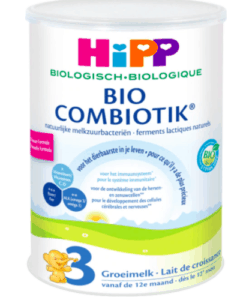
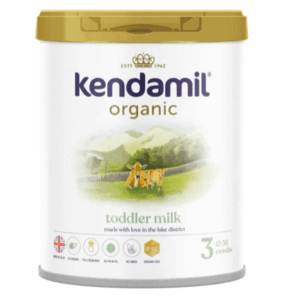
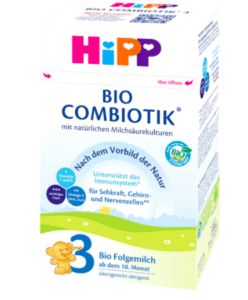
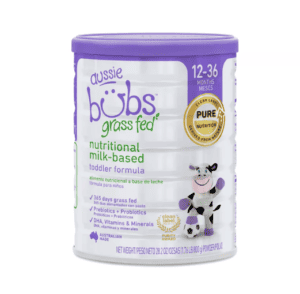
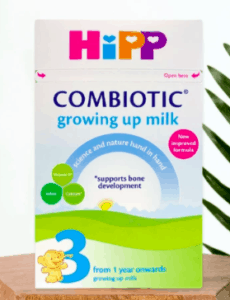

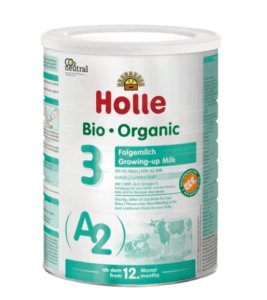
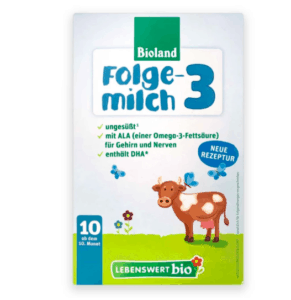
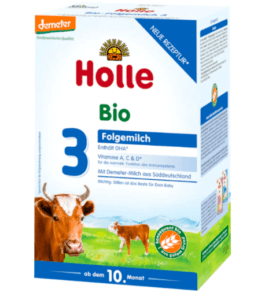
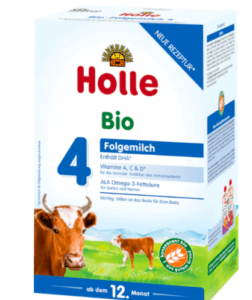
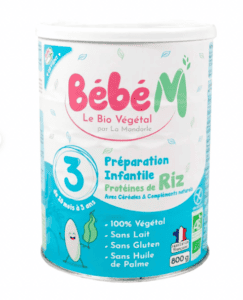

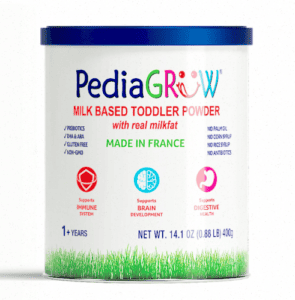
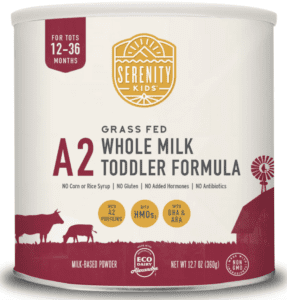
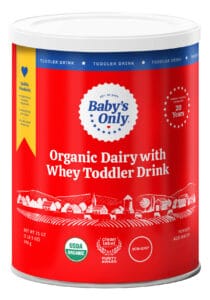
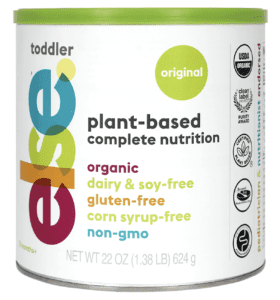
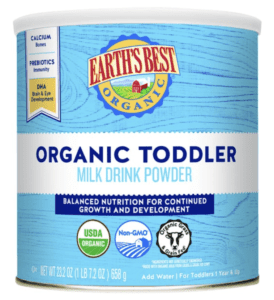
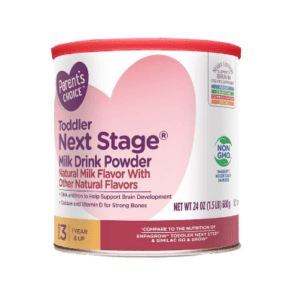

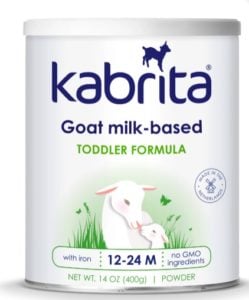
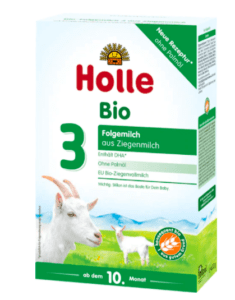
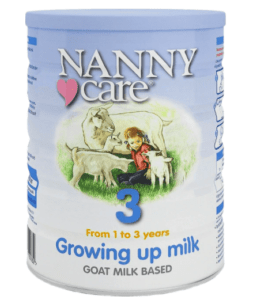
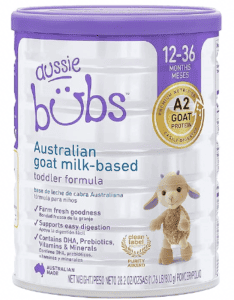
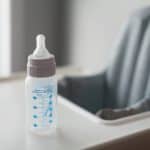
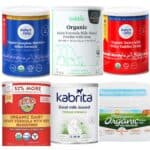







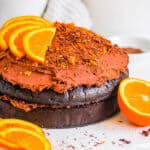
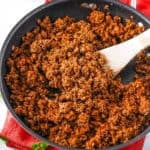
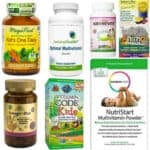
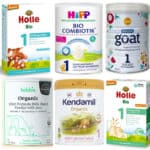



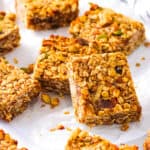




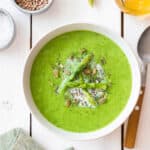
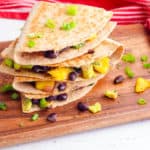
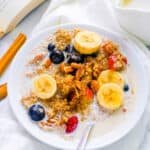


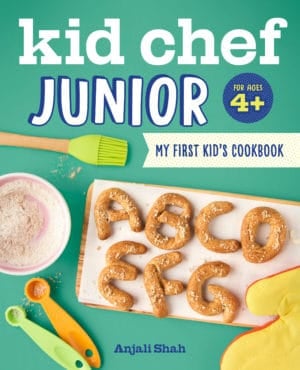

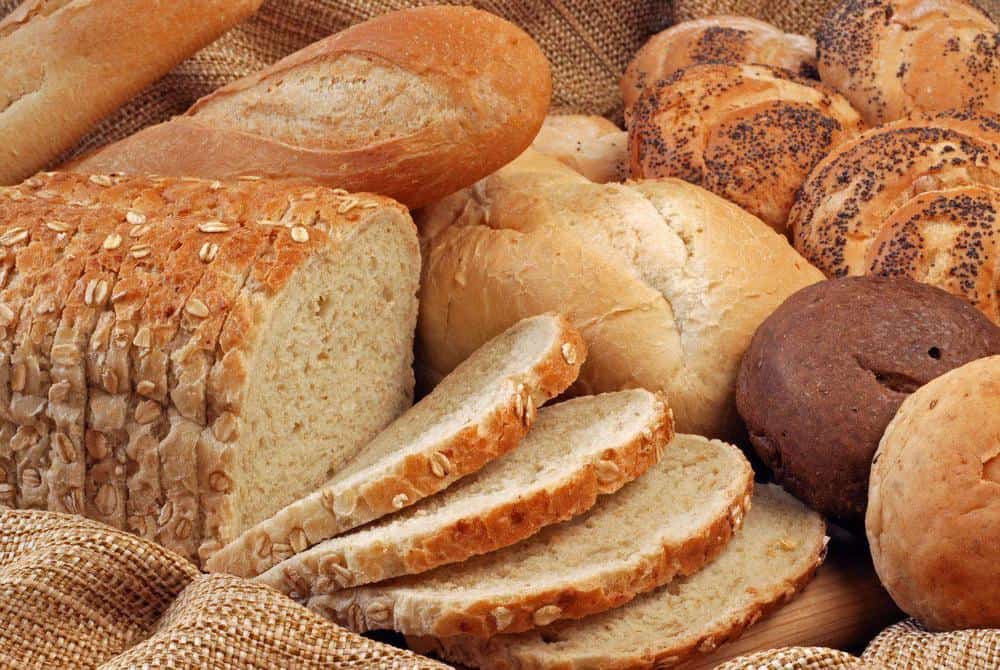
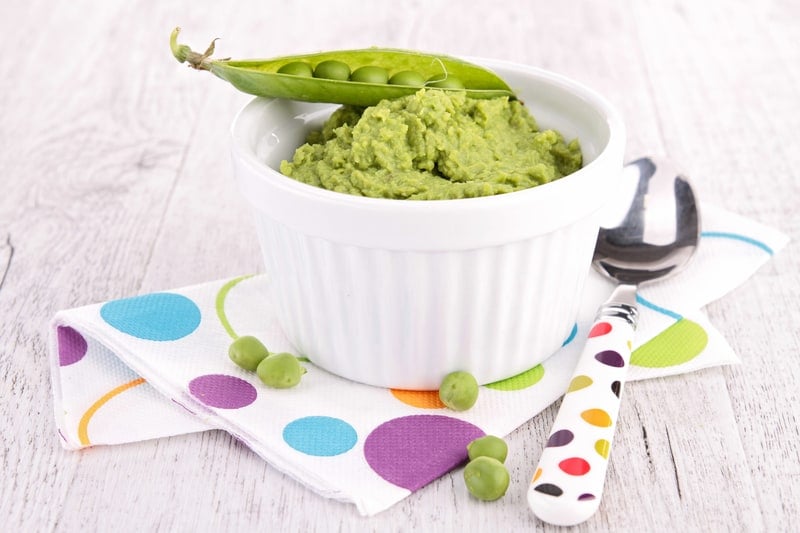
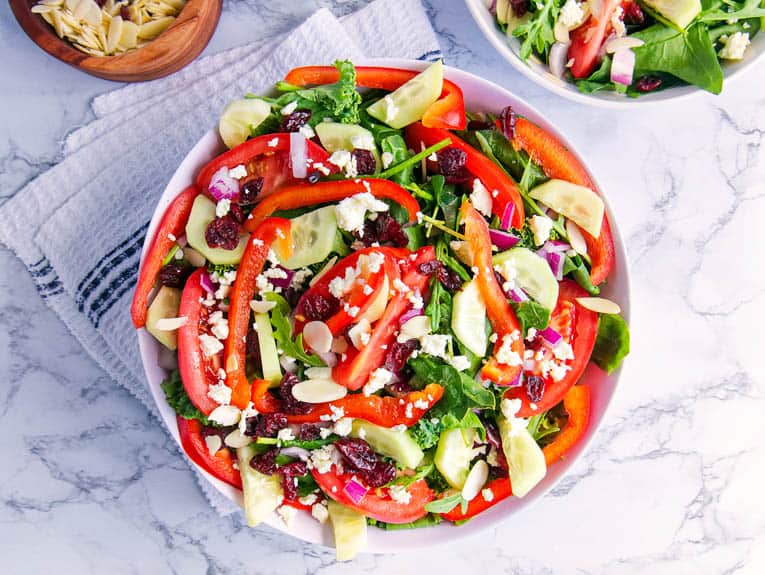



Hi! This is so helpful. My 13 months old is a very picky eater so I’m still giving her formula to make sure she’s getting nutrients. If infant formula is a complete source of nutrition, what about staying with infant formula after 12 months rather than switching to toddler?
Hi Kim! So glad you found this helpful! To your question – typically infant formula is a complete source of the nutritional needs for infants, not toddlers. Toddlers have different nutritional needs than infants (which is why there are different toddler formulas, and also why many toddlers don’t need formula after 12 months of age and can switch to regular milk instead). I would ask your pediatrician whether they think you should stick with infant formula, move to toddler formula, or just start on regular organic whole milk now that your daughter is 13 months old! Hope that helps!
Have you heard of growth spurt premium toddler formula goat milk or kabrita junior? What do you think? Especially compared with the other 2+ year olds formulas?
Hi Jennifer! Kabrita Junior is a great option for kids aged 2+ — it’s got the same high quality ingredients as Kabrita’s Toddler Formula, but with some added protein and other nutrients for older kids. You can even mix Kabrita Junior into mini meals like oatmeal, pancakes, etc! I hadn’t heard of growth spurt premium toddler formula – but when I looked it up the ingredients looked pretty good – I like that they have no sugar or syrup solids added and that they’re non GMO! I just don’t know if they follow organic practices for their goats and goat milk, compared to Kabrita who does, and some of the other formulas on this list that are already organic. Hope that helps!
Thank you so much for this!
Can you please share what you think of Earth’s Best Toddler milk? Is there a reason you didn’t rate it too? Thanks a million!
Hi Gabriella! Great question! I didn’t rate it because there are so many better options out there (which do appear on my list), but for comprehensiveness purposes, I decided to add it to my list! I ranked it #4 under the other 3 US toddler formula options. The main drawback to Earth’s Best compared to some of the other US brands is that it contains added sugar (in the form of cane sugar) and it also contains maltodextrin, so it’s a less ideal option. That said it is organic and is more affordable so there are benefits to it as a formula option as well!
Hi Anjali-
One last question. Thank you so much for helping me along this journey. How is Meyenburg Goat Milk? The organic grocery store near me sells it and our pediatrician said it would be okay to use. My daughter tried it and she seems to really like the taste. We did go ahead and purchase Kendamil Goat stage 3 to have on hand as well and I don’t mind using that for 1-2 drinks a day. Just wondering your thoughts on Meyenburg Goat Milk. Thank you!
Hi Alex! It looks like a fine brand of regular goat milk – the only thing to keep in mind is that it doesn’t look like Meyenburg Goat Milk is organic (although they do say that they don’t use any antibiotics/hormones/steroids, which is good). So I would say, if you can find an organic goat milk at your grocery store, go with that, otherwise I think if your daughter is over the age of 1, you could certainly just use regular goat milk instead of cow’s milk or formula at this point (as long as your pediatrician agrees!) Hope that helps!
Hi! You have been so helpful this past year as I navigate breastfeeding and formula feeding for my daughter. Thank you! She just turned 1 and we use Kendamil goat stage 1. It has been great. I wanted to switch her to unsweetened Ripple milk but it is really hard to find. So I am thinking of keeping her on powdered formula for a few more months; unless you have another suggestion. I am open! I would probably move her to Kendamil Goat stage 3. But the ease of buying milk in the grocery store is nice. I just don’t want cows milk. Thanks!!
Hi Alex! Thanks so much for your kind words! I’m so glad my blog has been helpful for you! To your question – you could totally use Kendamil Goat Stage 3 as that’s meant for toddlers. Alternatively, if your pediatrician is ok with it, you could just buy regular organic goat milk from the grocery store to give to her! Ripple unsweetened is also a decent option, it’s just not organic. Another option would be to use organic unsweetened almond milk and mix it with Tejari protein powder for kids to give the almond milk a protein boost. Hope that helps!
Thank you so much! This is very helpful information!
No problem at all!